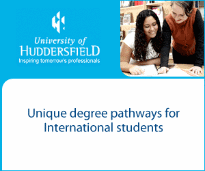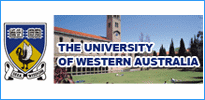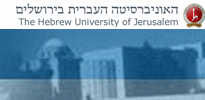Cuba: Cuba Education Profile 2012
2012/03/06
Cuba Education Profile 2012
Cuba spends a large fraction of the state budget on education, and has done so for decades. It has also offered an example of extremely low economic return on its vast investment in education. Cuba has a large network of basic, secondary and higher education institutions, and many significant research institutions. There is no private educational system. The quality of its science and scientists in some fields is world class. However, the transformation of research into useful products has been a problem; Cuba has long invested huge sums in the development of biotechnology, with few commercially significant results. This vast investment in human capital began to pay off in the mid-2000s with the massive export of Cuban health care, education and sports services to Venezuela in a barter arrangement for Venezuelan oil shipments, which may augur well for the future.
Education in Cuba is extremely subsidized at all levels. In 1961 the government nationalized all private educational institutions and introduced a state-directed education system. There are no tuition fees paid by school or university students and private schools or private universities are not permitted. Education expenditures continue to receive high priority. Nevertheless, the economic upheaval after 1991, known as the Special Period, strained Cuba's long-standing efforts to ensure access to quality educational services. he system has been criticized for political indoctrination and for monitoring the political opinions of the students which may have lifelong consequences.
Level of achievement
Historically, Cuba has had some of the highest rates of education and literacy in Latin America, both before and after the revolution. In the 1950s, Cuba's literary rate of 76% ranked fourth in the region. Since the revolution, Cuba has maintained high standards of educational development. In 1995 rates were 96%. This was second after Argentina of thirteen Latin American countries surveyed.
A 1998 study by UNESCO reported that Cuban students showed a high level of educational achievement. Cuban third and fourth graders scored 350 points, 100 points above the regional average in tests of basic language and mathematics skills. The report indicated that the test achievement of the lower half of students in Cuba was significantly higher than the test achievement of the upper half of students in other Central and South American countries in the study group.
"Cumulative School File"
In primary school the so-called "Cumulative School File." is introduced. This is a little like a report card, but it is not limited to academic achievements. It measures "revolutionary integration," not only of the student but also of his family. This file documents whether or not the child and family participate in mass demonstrations, or whether they belong to a church or religious group. The file accompanies the child for life, and is continually updated. His university options will depend on what that file says. If he does not profess a truly Marxist life, he will be denied many career possibilities.
In 1994 in a UNHCR report the Special Rapporteur, Mr. Carl-Johan Groth wrote: " According to the information received, the so-called "cumulative school record" and "employment record" make it possible to monitor the ideological integration of individuals virtually throughout their lives, by including not only purely academic or employment-related material, but also information regarding their membership in mass organizations, functions performed in such organizations, level of activism, ideological features of family members, misconduct, etc. Often individuals are expelled from educational institutions, dismissed from their jobs or subjected to some form of discrimination for expressing, in some way, views inconsistent with the official ideology."
School Education
School attendance is compulsory from ages 6 to 15 or 16 (end of basic secondary education) and all students, regardless of age or sex, wear school uniforms with the color denoting grade level. Primary education lasts for six years. Secondary education is divided into basic secondary education and pre-university secondary education. The curriculum in primary and secondary schools is based upon principles of "hard work, self-discipline and love of country".Education in Cuba At the end of basic secondary education, pupils can choose between pre-university education and technical and professional education. Those who complete pre-university education are awarded the Bachillerato. Technical training leads to two levels of qualification - skilled worker and middle-level technician. Successful completion of this cycle gives access to the technological institutes.
Higher Education
Higher education is provided by universities, higher institutes, higher pedagogical institutes, centres of higher education and higher polytechnic institutes. All higher education institutions are public. The Ministry of Higher Education (Ministerio de Educación Superior (MES)) is responsible for policy in matters of undergraduate and postgraduate education. It controls teaching, methodology, courses and programmes and the allocation of student places, as well as the specialization courses offered by centres of higher education which come under the control of other ministries. All institutions have the same status. Cuba has 47 universities and total university enrollment is approximately 112,000 citizens.
The University of Havana, Cuba's oldest university, was founded in 1728. Other official universities included Universidad de Oriente (founded in 1947) and Universidad Central de Las Villas (founded in 1952). Private universities, which were nationalized without reimbursement along with private schools in 1961, include Universidad Católica de Santo Tomás de Villanueva (founded in 1946); Universidad Masónica, and the Universidad de la Salle in Nuevo Vedado.
In 1979 the Cuban Ministry of Higher Education initiated a scheme of Distance Education. Distance Education is offered in 15 centres across the country, which provide regular afternoon and evening courses for workers. The scheme offers five degrees in Law, History, Scientific and Technological Information, Accounting and Finance and Economics. There are approximately 20,000 students taking the five degrees offered in all the centres of the country, about 50% of whom are at the Universidad de La Habana. Candidates must have completed secondary school, have at least one year's work experience, be between 25 and 35 years of age and pass an entrance examination. Membership in the Communist Party also affects a student's chances of being admitted to any of Cuba's universities. These studies are offered as evening or correspondence courses (week-ends) and generally last for six years. There are also 'guided' or free courses open to all secondary school or higher education graduates.
International Students
Although education is free to Cuban citizens, foreign students wishing to study in Cuba pay tuition fees of between US$4000-7000. Foreign students must hold a Bachelors or an equivalent degree, have a visa and follow compulsory Spanish classes. Preparatory facilities offer courses in Spanish. During the 2000-01 school year Cuba allowed 905 U.S. students to visit and study.In 1999 a scheme was implemented to attract students to study medicine in Cuba from less privileged backgrounds in the United States, Britain and Latin American, Caribbean, and African nations.Cuba currently hosts 3432 medical students from 23 nations studying in Havana.
However, Cuba has also provided state subsidized education to foreign nationals under specific programs, including U.S. students who are trained as doctors at the Latin American School of Medicine. The program provides for full scholarships, including accommodation, and its graduates are meant to return to the US to offer low-cost healthcare.
Teacher education
A five-year course is provided for pre-primary and primary/basic school teachers at the Institutos Superiores Pedagógicos. They obtain the "Licenciado en Educación Primaria" (Certificate in Primary Education) or other types of degrees. Secondary school teachers are trained at the . He conferres them a "Licenciatura en Educación" (Certificate in Education). Admission to these courses is based on the Bachillerato. Higher education students are offered specialized upgrading courses in the subjects they teach as well as teacher training courses. Many teachers are professionals from the production field. They also receive teacher training. Where teachers are specially selected graduate students, as has mostly been the case in the last ten years, they receive initial teacher training simultaneously with their studies.
Educational co-operation
In 2006 Venezuela and Cuba began jointly sponsoring education programs in El Palomar, Bolivia.[Cuba also maintains close co-operation on education with the United Kingdom and other nations in the European Union. In 2002 British Minister for Education Jane Davidson and representatives of the Universities of Swansea and Glamorgan in Wales visited Cuba to create provisions for officials in Britain and Cuba to liaise over educational projects.In the United States, the Cuban and Caribbean Studies Institute, a part of Tulane University, has developed relations with Cuban counterpart organizations for the purposes of academic collaboration and exchange, curricular development, cultural exchange and international development and dialogue.
Criticism
The US State Department states that Cuba has been among the most literate countries in Latin America since well before the Castro revolution. The improvement in literacy after this is impressive, but not unique, among Latin American countries. Panama, Paraguay, Colombia, Brazil, El Salvador, Dominican Republic, Ecuador and Haiti, which all ranked just behind Cuba in this indicator during the 1950s – have equalled or bettered Cuba's improvement when measured in percentage terms. A UNESCO study showed, however, that the third and fourth graders in Cuba held the highest level of achievement in mathematics and language skills compared to other Latin American countries.
Human rights activist Sebastián Arcos Cazabón also disputes that education is "free", since from the time a young person reaches seventh grade until he or she completes twelfth grade, he or she is required to spend 30 days without pay each year working on the land. Later, university graduates have to do "social service", a period of some three years work carried out by the graduate wherever he is sent.
In addition to this, The Wall Street Journal has also noted that from the time they are in elementary school onward, students are told that God does not exist and that religion is "the opium of the masses". If any student speaks about God, his or her parents will be called to the school, warned that they are "confusing" the child, and threatened. The Code for Children, Youth and Family provides for a three-year prison sentence for any parent who teaches a child ideas contrary to communism. The code states that "no Cuban parent has the right to "deform" the ideology of his or her children, and the state is the true 'Father'." Article 8 of that same code reads: "Society and the state work for the efficient protection of youth against all influences contrary to their Communist formation
In order to enter university, students are also required to pass an entry examination to show that they possess the basic knowledge required. In order to take this examination students need a letter from the Committee for the Defense of the Revolution (CDR) vouching for their "political and moral background". It is reported that often people are unable to take the examinations because their letter from the CDR was unfavorable. In one case a student was not allowed to take the examination as the letter stated that he "had friendly relations with elements who wished to leave the country".
- Cuba News
-
- CUBA: Obama administration loosens Cuba embargo with new measures
- AFGHANISTAN: Global growth will be disappointing in 2016: IMF's Lagarde
- CUBA: Cuba’s Dire Need For Foreign Investment: What It Means To Its Developing Economy
- ARUBA: CARICOM and USAID reach agreement on development assistance for Caribbean
- CUBA: Cuba among 10 destinations chosen by top luxury travel specialists
- CUBA: Cuba and US agree to cooperate in environmental protection
- Trending Articles
-
- EUROPEAN UNION: Two Remarks on the Turkey-EU Deal on the Migrant Crisis
- CHINA: Macau businessman wants to take companies from China to Cabo Verde
- UNITED KINGDOM: Cameron urges Britons to register for EU vote
- EAST TIMOR: East Timor’s Finance
- CHILE: Chile Student Protests 2016: Police Arrest 117, Use Tear Gas During Education Reform Demonstration
- FRANCE: War! Tourists from England, Russia and France involved in bloody fighting












